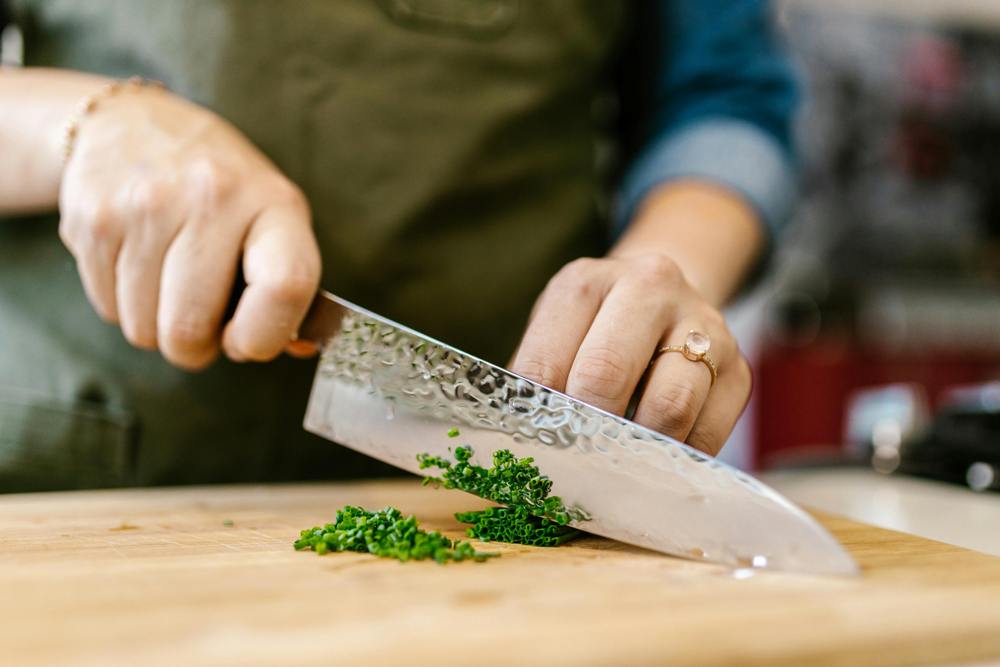
Mastering knife skills is a foundational step for any home chef eager to elevate culinary craft and efficiency. Precision, speed, and safety go hand in hand when wielding a knife properly, transforming cooking from a chore into an enjoyable, confident experience. Beyond improving meal preparation, refined knife techniques allow flavors and textures to shine by creating uniform cuts that cook evenly. Familiarity with slicing, dicing, and chopping empowers cooks to approach recipes with ease while minimizing waste and preventing injuries. Building these skills offers a gateway to greater creativity and control in the kitchen.
Choosing the Right Knife
The starting point for effective knife skills is selecting the appropriate blade. A sharp chef's knife serves as the workhorse, versatile for a range of tasks from slicing vegetables to carving meats. Paring knives excel at delicate work such as peeling or trimming, while serrated knives handle breads and tomatoes with ease. Familiarity with the weight, balance, and grip of each knife improves comfort and control. Proper care, including regular sharpening and correct storage, maintains edge quality and reduces the risk of accidents. Handling a knife that feels natural in hand lays the foundation for confident technique and precise results.
Grips and Knife Safety
Understanding how to hold a knife securely ensures both safety and efficiency. The pinch grip, where the thumb and forefinger grasp the blade just above the handle, offers greater control during cutting motions. This technique allows the remaining fingers to wrap comfortably around the handle, promoting stability. Maintaining a firm but relaxed grip prevents fatigue and reduces the chance of slipping. Equally important is the claw grip
for the non-cutting hand, where fingertips curl inward to shield against accidental contact with the blade. Consistent practice of these grips fosters precision and reduces the likelihood of injury during any kitchen task.
Basic Cutting Techniques
Slicing involves creating thin, even pieces by guiding the knife in a smooth back-and-forth motion, perfect for vegetables like cucumbers or meats such as chicken breast. Dicing takes slicing a step further by cutting items into uniform cubes that enhance even cooking and presentation. Proper dicing begins with slicing the ingredient into consistent slabs, then cutting across those slabs at regular intervals. Chopping is generally a quicker, less precise cut used for herbs or items that will be cooked down, but attention to control remains important. The rhythm between knife and board, paired with steady wrist movement, ensures efficiency and accuracy across all techniques.
Sharpness for Safety
A dull knife poses greater danger than a sharp one, often requiring excess force that increases the risk of slips and cuts. Honing rods realign the blade's edge for routine upkeep, while professional sharpening or quality sharpening stones restore blades when dullness sets in. Regular maintenance keeps knives slicing cleanly and consistently. This sharpness is critical for fine cuts like julienne or chiffonade, where a precise blade enhances texture and visual appeal. A well-kept blade makes even challenging tasks feel manageable, elevating both confidence and culinary outcomes.
Proper Cutting Surfaces
Choosing the right cutting surface complements knife care and overall kitchen hygiene. Wooden or bamboo cutting boards provide a firm yet forgiving surface that preserves blade edges longer than harder materials. Plastic boards offer easy sanitizing and are suitable for raw meats to prevent cross-contamination. Avoid cutting on glass, ceramic, or stone surfaces, as they can dull or chip blades quickly. Rotating between boards based on ingredient type also helps maintain cleanliness and flavor integrity. The correct surface supports smooth, controlled cuts and extends the life of both knives and countertops.
Preparing Ingredients
Before beginning any cutting task, proper preparation of ingredients is key. Washing, peeling, and trimming produce or meats removes unwanted elements and establishes a clean base. Positioning items securely on the cutting board, such as halving round vegetables to create a flat surface, reduces wobbling and improves safety. Holding the ingredient firmly with the claw grip keeps fingers clear while allowing fluid movement of the knife. These preparatory steps minimize hesitation and enhance precision, making the cooking process smoother and more enjoyable.
Techniques for Specialty Cuts
More advanced cuts add finesse and dimension to dishes. Julienne cuts produce thin matchstick strips ideal for salads and stir-fries, while chiffonade slicing creates delicate ribbons typically used for leafy herbs or greens. Batonnet cuts form thicker sticks for items like fries or crudités. Each technique demands patience and steady hands, but mastering them imparts a professional touch to home cooking. Precise cuts not only improve presentation but influence cooking times and flavor distribution, showcasing the relationship between skill and taste.
Improving Speed Through Practice
With foundational skills in place, cultivating speed becomes a natural next step. Repetitive practice encourages muscle memory, enabling smoother, faster motions without sacrificing safety or accuracy. Developing a comfortable rhythm helps maintain focus and reduces strain. Incorporating timed exercises or challenges can make practice engaging and measurable. As speed increases, confidence grows, allowing for greater experimentation and creativity in meal preparation. The kitchen transforms from a place of labor to one of enjoyment, where efficiency meets artistry.
Cleaning and Caring for Knives
Proper cleaning and storage are essential for preserving the integrity of knives. Washing by hand with warm, soapy water and drying immediately prevents rust and corrosion. Avoiding dishwashers preserves the blade and handle materials, which can degrade under harsh conditions. Storing knives in wooden blocks, magnetic strips, or protective sheaths prevents dulling and accidental damage. Regular maintenance rituals also foster respect for these tools, reinforcing safe habits and prolonging their service life. A well-cared-for knife feels like a trusted partner in the kitchen.
Mastering basic knife skills offers a blend of safety, speed, and precision that transforms the cooking experience. Familiarity with grips, cutting techniques, and proper maintenance creates a foundation for both daily tasks and culinary creativity. Practicing these skills consistently enhances confidence and enjoyment, making food preparation an engaging and rewarding pursuit. With the right tools and techniques, every home chef can achieve professional-quality results while safeguarding their well-being.
EDITORIAL POLICY
The Flash List is dedicated to providing trustworthy editorial content by maintaining strict ethical standards, journalistic integrity, and credible professionalism regardless of any remuneration as working media. The Flash List is not affiliated with third-party companies mentioned and makes no endorsement or guarantee expressed or implied. The preceding article, which contains affiliated link(s) for which compensation was received, is intended for informational reference only and does not constitute advice of any kind. Moreover, a qualified professional should be consulted regarding any lifestyle consideration, medical treatment, or monetary transaction, etc. Content is published in accordance with USFTC regulations and terms and conditions.
MORE ON THE FLASH LIST
































